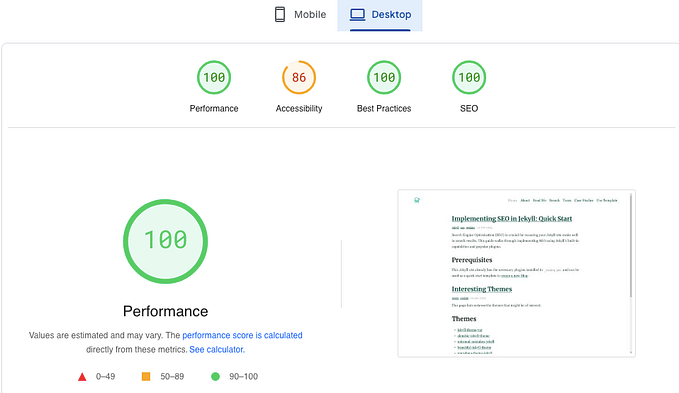Deploying an Elm Frontend to Cloudflare Pages
While experimenting with the Cloudflare platform, I wrote a small Elm frontend which gets some data from a Workers hosted backend and renders it. This was very much a toy project to understand how these tools can fit together. Here I describe how I deployed this Elm frontend to Cloudflare Pages.
(In an earlier incarnation of the work, I served HTMX from the Workers based backend, but this had issues serving go-echarts based content and ultimately I felt this solution resulted in a very unclear frontend/backend distinction; for this reason, I started looking at a dedicated Elm frontend).
As Elm is designed specifically for frontend use and can compile to static content, it’s a good fit for Cloudflare Pages and quite a compelling proposition with Cloudflare Pages being free. However, there is little documentation on how to deploy Elm applications to Cloudflare.
I used the elm-land framework to build my simple app - it only has a couple of pages and pulls data from an OpenAPI-compatible API. When working in development mode, it’s straightforward to run elm-land server to serve the frontend while working on it.
To deploy the application, it’s first necessary to build a production version of it by compiling the Elm application to static HTML/Javascript. elm-land build can be used to do this - it generates the static frontend in the dist directory.
🕙 15:38:19 ❯ elm-land build
🌈 Elm Land (v0.19.5) build was successful.
⎺⎺⎺⎺⎺⎺⎺⎺⎺⎺⎺⎺⎺⎺⎺⎺⎺⎺⎺⎺⎺⎺⎺⎺⎺⎺⎺⎺⎺⎺⎺⎺⎺⎺⎺⎺⎺⎺⎺⎺To deploy the frontend, the Cloudflare wrangler toolchain was used. (See here if you require instructions on setting up wrangler). Create a wrangler.toml file so wrangler knows how to deploy the frontend.
name = "<YOUR-APPLICATION-NAME>"
pages_build_output_dir = "./dist"
compatibility_date = "2024-08-19"
[dev]
port = 8989
local_protocol = "http"This tells wrangler where the content is located and how to serve the content when run locally.
🕙 15:38:08 ❯ wrangler pages dev
⛅️ wrangler 3.68.0 (update available 3.72.0)
-------------------------------------------------------
No Functions. Shimming...
[wrangler:inf] Ready on http://localhost:8989
⎔ Starting local server...
╭─────────────────────────────────────────────────────────────────────────────────────────────────────────────────────────────────────────────────────────────╮
│ [b] open a browser, [d] open Devtools, [c] clear console, [x] to exit │
╰─────────────────────────────────────────────────────────────────────────────────────────────────────────────────────────────────────────────────────────────╯A version of frontend is served locally on port 8989 (as specified the wrangler.toml); it can then be accessed on http://localhost:8989 from a browser.
Satisfied that the frontend is behaving as expected, deploying to Cloudflare Pages is as simple as:
🕙 15:45:03 ❯ wrangler pages deploy
🌍 Uploading... (3/3)
✨ Success! Uploaded 2 files (1 already uploaded) (2.36 sec)
🌎 Deploying...
✨ Deployment complete! Take a peek over at https://<REDACTED>.pages.devHit the endpoint above and you will see your application hosted on Cloudflare Pages.
Differentiating between development and production deployments
A common issue when deploying frontends is to be able to point a development frontend at, say, a staging API, while a production frontend must point to a production API. Hence, a mechanism is required to be able to specify such differences in deployments and specifically, in this case, which backend should be used by the frontend.
Elm has support for this with some documentation highlighting this specific scenario; however, not all the details were clear to me so I note them here.
The basic mechanism requires use of Environment Variables (see here). Environment variables can be passed to Elm from Javascript, where they can be picked up from the runtime using process.env standard mechanisms provided by node. Using this mechanism, it’s possible to specify an environment variable when running the development server as follows:
$ API_ENDPOINT="http://my.test.endpoint" elm-land serverand this can be accessed via Flags in the Elm application.
That works fine when running the development server which somehow has a runtime; however, Cloudflare Pages only supports serving of static content which does not provide a runtime — the content is run in the browser and does not have access to environment variables from the serving environment. Consequently, these parameters must be embedded in the static content.
elm-land has support for embedding environment variables into the static assets. It supports reading key-value pairs from a .env file and embedding these in the static content such that they can be accessed via process.env and passed to the Elm application. (As these variables are embedded in the static content, no secrets should be included via this mechanism).
Note that there is some specific, non-obvious, detail here — environment variables are read from the .env file; the prefix ELM_APP_ is applied to these variables, and they are statically included within the frontend. This prefix is then stripped from these variables when the frontend code runs in the browser. It’s not absolutely necessary to know this detail, but it is documented in some places on the internet and it was not clear to whether I needed to specify environment variables with this ELM_APP_ prefix or not - I didn’t.
Tidying up
The above can be used to serve the frontend via a pages.dev domain; usually you need to add a Custom Domain to serve it from your domain.
You probably need to perform some CORS configuration on your API to enable content to be served to the frontend.
If you’re feeling brave, you can set up continuous deployment. Cloudflare Pages does not support Elm builds by default (supported frameworks are listed here) so it would probably be necessary to set up a github action which performs the build and pushes to Cloudflare — perhaps a topic for another post…
Note: this was originally published at https://www.gopaddy.ch/en/posts/794f597/







